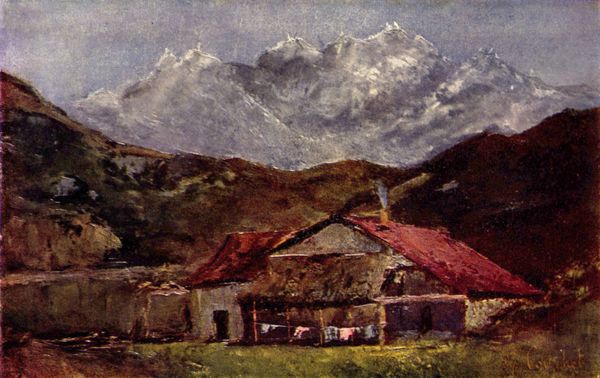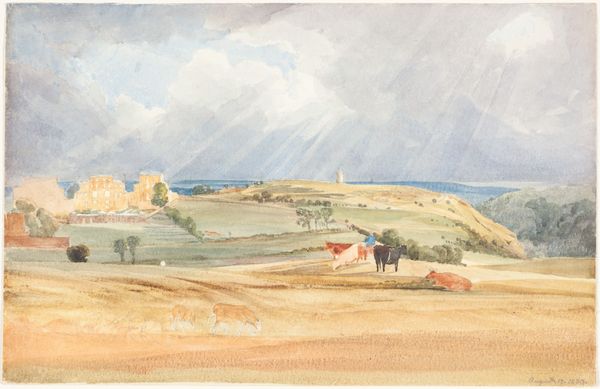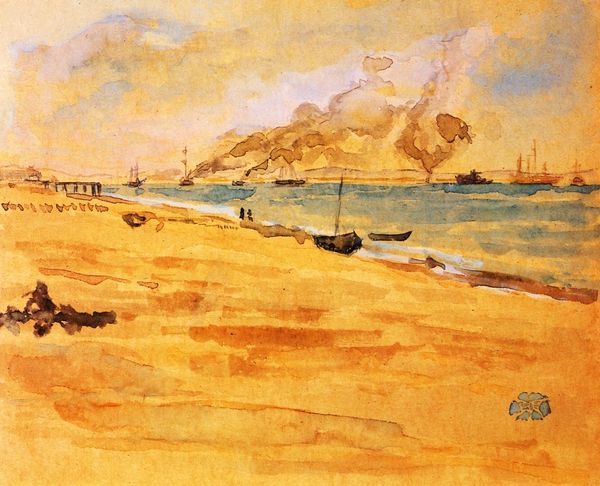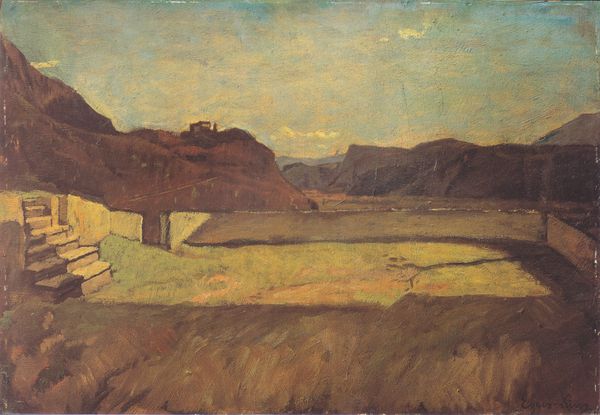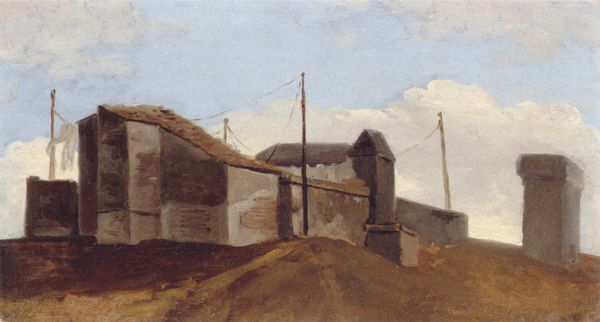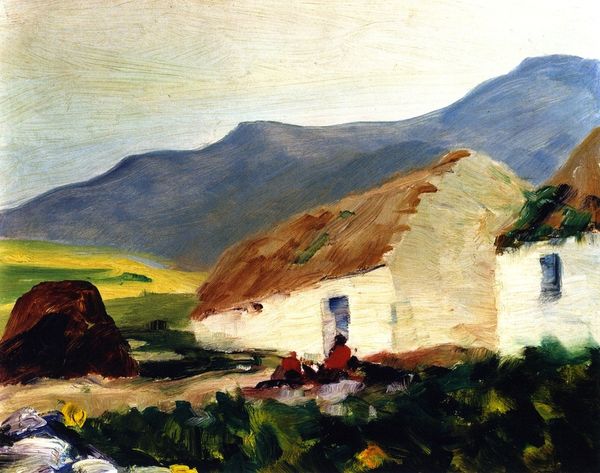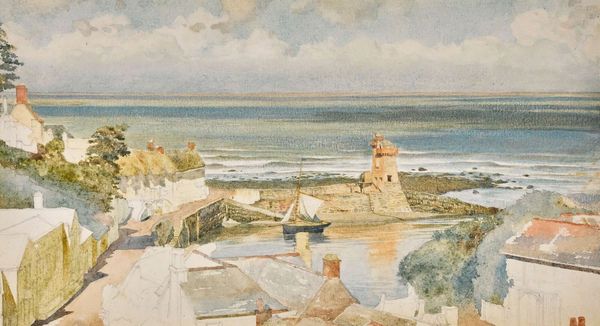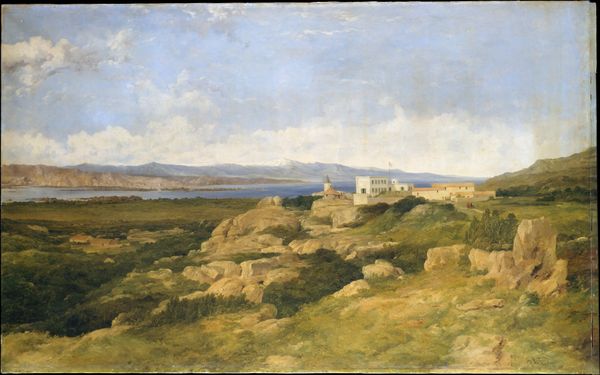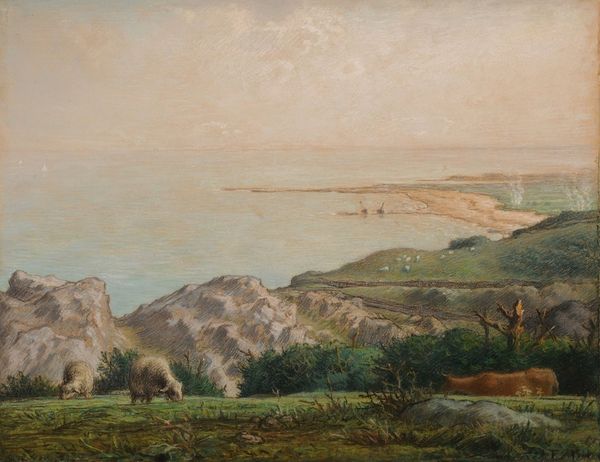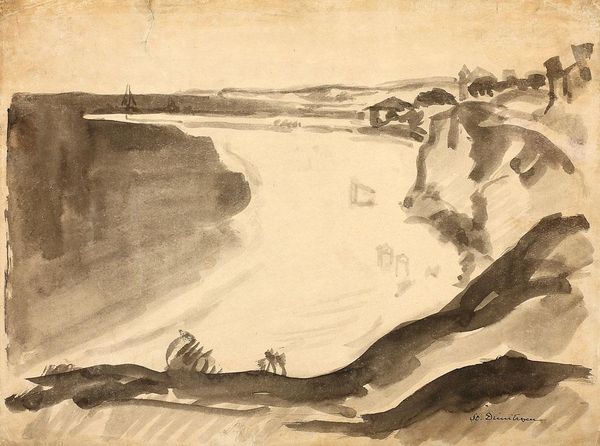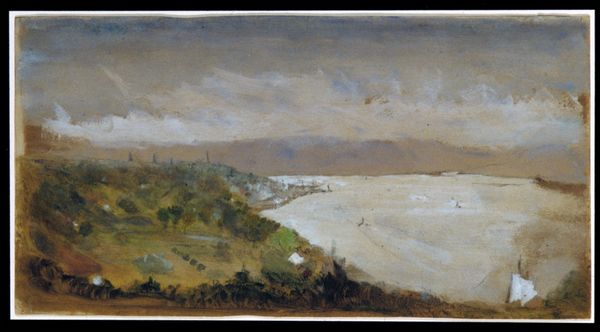
plein-air, oil-paint
#
impressionism
#
plein-air
#
oil-paint
#
landscape
#
house
#
impressionist landscape
#
oil painting
#
seascape
#
cityscape
#
italian-renaissance
#
italy
#
building
Dimensions: 11 x 27.5 cm
Copyright: Public domain
Curator: Today, we’re examining Vincenzo Cabianca's "Houses in Lerici," painted in 1865. It's currently held at the Galleria Nazionale d'Arte Moderna e Contemporanea in Rome. Editor: The immediate impression is a hazy warmth. The composition feels divided, with a cluster of buildings on the left and then this striking blue seascape on the right, yet held together by that beautiful creamy light. Curator: Yes, Cabianca uses light here not merely as illumination, but as a structuring element. Notice how the strong contrasts delineate the forms. This painting exemplifies plein-air, attempting to capture the optical sensations of a specific moment. Editor: The textures also grab my attention. The rough rendering of the stone wall against the smoothness of the sea…I imagine Cabianca worked rapidly, almost sculpting the paint. How much do we know about his process at this time? What sort of brushes or palette knives would he have used? Curator: Records suggest he embraced the macchia technique of using broad strokes to suggest forms. He abandons highly defined outlines. Semiotically, these houses almost stand as signifiers of rustic Italian life; archetypes within a broader visual vocabulary. Editor: It speaks volumes about the socio-economic realities of the location as well. The construction, the choice of materials… those humble dwellings along the harbor likely housed the working class dependent on maritime trades. There is beauty in that honest labor, echoed in Cabianca's direct painting approach. Curator: Precisely. The muted palette and slightly tilted horizon perhaps imply a certain humility—an acknowledgement of the artist's position relative to this particular subject. Editor: I see a dialogue between the artist and the landscape. Not just rendering of topography but engaging with material conditions. It reminds me of humble tools making marks representative of labor. Curator: I agree. A compelling artwork that allows us to contemplate the formal relationships but also the intrinsic historical setting. Editor: Yes, a work rich in textural narrative and constructed meanings of human existence alongside land and water.
Comments
No comments
Be the first to comment and join the conversation on the ultimate creative platform.
